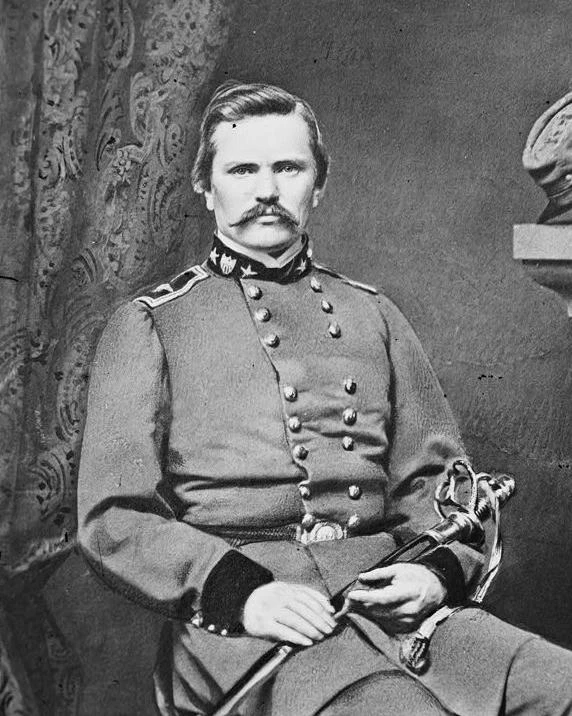Last updated: September 6, 2024
Person
Simon Bolivar Buckner

Library of Congress
Simon Bolivar Buckner served in the United States Army during the Mexican-American War, later serving as a Confederate general in the Civil War. His surrender at Fort Donelson to General Ulysses S. Grant made him a prisoner of war at Fort Warren on Georges Island in Boston, Massachusetts. Released in a prisoner exchange, Buckner fought through the end of the war and later served as Governor of Kentucky.
Early Life and Military Service
Born in Kentucky on April 1, 1823, Buckner graduated from the United States Military Academy at West Point in 1844. He served in the United States Army during the Mexican-American War, fighting with distinction at battles such as Contreras, Churubusco, and Molino del Rey. In Mexico, he served side by side with his future battlefield opponent, Ulysses S. Grant, and his future jailor, Justin E. Dimick. After a short time teaching at West Point, Buckner retired from the US Army in 1855.
At the outbreak of the Civil War, Buckner accepted a brigadier general’s commission in the Confederate Army in September 1861. He took charge of defending Fort Donelson on the Cumberland River and faced General Grant’s US Army forces during a siege of the Fort in February 1862. When Buckner’s counterattack failed to break through the encirclement, he was left no choice but to surrender to Grant. Buckner may have hoped for lenient terms from his former friend, but instead Grant issued his famous order to the Confederate general: "No terms except unconditional and immediate surrender can be accepted." With the victory at Fort Donelson, US forces took control of much of Tennessee and accepted the surrender of 12,000 Confederate soldiers, including General Buckner.
Imprisonment at Fort Warren
Now a prisoner of war, General Buckner was sent north to Fort Warren in Boston Harbor, arriving on March 3, 1862. Buckner spent a short but eventful few months at Fort Warren. He was imprisoned alongside General Lloyd Tilghman, who had surrendered to Grant at Fort Henry earlier in the campaign.
Both Buckner and Tilghman were former friends of Fort Warren’s commander, Colonel Justin Dimick, who had fought alongside them at the Battle of Palo Alto in the Mexican-American War. The camaraderie between these officers was such that Dimick reportedly had tears in his eyes when he ordered Buckner into solitary confinement. During this exchange, Buckner ended up consoling Dimick.
Buckner was well-treated at Fort Warren and not watched very strictly. One night in solitary confinement, his guard fell asleep on duty, allowing Buckner to visit Tilghman before returning to his cell. Buckner left Fort Warren on July 31, 1862, remaining imprisoned until he was later exchanged for US General George A. McCall, allowing Buckner to return to field service with the Confederate Army.
The End of the War and Later Life
Back in Confederate Service, General Buckner fought at the major battles of Perryville, Chickamauga, and Knoxville. He rose to the rank of lieutenant general in September 1864. Buckner surrendered in June 1865, one of the last Confederate generals to do so.
After a few years in New Orleans, Buckner returned to Kentucky in 1868. He ran for Governor of Kentucky and served one term in office from 1887 to 1891. After an unsuccessful bid for the Democratic Party’s candidate for Vice President in 1896, Buckner retired to his home at Glen Lily, Kentucky. Simon Bolivar Buckner died on January 8, 1914.
Contributed by: Raphael Pierson-Sante, SCA Historic Preservation Corps Crew Member
Sources:
"Simon B. Buckner." American Battlefield Trust. Accessed September 4, 2024.
Stokinger, William A. and Beth Jackendoff. Fort Warren George’s Island Fort Tour Background Package. Massachusetts Department of Conservation and Recreation, 2008.
Snow, Edward Rowe. Historic Fort Warren, Boston Printing Company, 1941.
